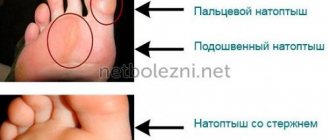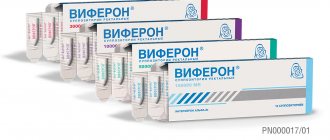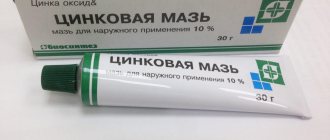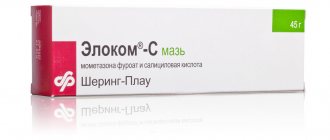Pharmacology offers many remedies for the treatment of skin pathologies. One of these drugs is salicylic ointment. It contains salicylic acid, which an Italian scientist synthesized from willow bark. Knowing the features of the drug, its capabilities, indications and contraindications for use, patients will be able to easily use the drug to treat the most complex ailments.
Composition of the product
Salicylic acid
is a medicinal component of the ointment. Few people know that it was obtained from willow bark by chemist Rafael Piria. After all, the bark of the tree was and is used as an anti-inflammatory agent. In memory of the original source, the name of the acid contains the root salix, which is translated from Latin as willow.
Acid plays a major role not only in ointments, but also in alcohol solutions for external use, Lassar paste and anti-callus agents.
But in 100 g of salicylic acid ointment there are only 2 and 3 grams, which determines the percentage.
The rest is a Vaseline base. The result is a greasy white mass. It is sold in pharmacies in glass jars of 25, 50 and 100 g.
Interaction
The active component increases the permeability of the skin, enhancing the penetration and further absorption of other topical medications. Salicylic acid entering the systemic circulation increases the severity of negative reactions of sulfonylurea drugs, oral hypoglycemic agents, and Methotrexate .
Pharmaceutical incompatibility is registered with respect to zinc oxide (an insoluble form of Zn salicylate is formed) and Resorcinol (mixtures of melting action are formed).
Therapeutic effect
Like all ointments, salicylic acid is an external agent. It is applied as:
- anti-inflammatory;
- antiseptic;
- keratolic (in high concentrations);
- local irritant medicine.
It is known that the product inhibits the secretion of sweat and sebum from the pores of the skin.
When is it appointed?
An inexpensive but effective remedy is used in the treatment of skin ailments. Instructions for use are:
- Increased sebum secretion
, caused by disturbances in the regulation of the functions of the sebaceous glands of the skin. The secretion of liquid sebum is noticeable on the face and scalp. This is why oily seborrhea, pimples and non-inflammatory acne appear. - Inflammatory skin diseases
with severe itching and rash, characteristic of eczema and dermatitis. - Chronic non-infectious skin lesions
: psoriasis and other types of lichen. - Physiological disorder of skin keratinization
, called dyskeratosis and ichthyosis. - Benign skin tumors
caused by viruses: warts and papillomas. - Calluses and corns
. - Traumatic skin lesions
: burns and wounds. - Infectious infections of the skin
with pathogenic fungi.
Some manage to find additional functions of salicylic ointment. What does acid help with in cosmetology? Believed to reduce wrinkles. Therefore, many women regularly use it as a component for making masks. But no studies have been conducted on the cosmetic effect. And due to its strong keratolytic (exfoliating) properties, it is used extremely carefully. There is a risk of serious complications.
Salicylic ointment, application
What is Salicylic ointment for and what does it help with?
The drug has a pronounced anti-inflammatory effect and has an antiseptic effect, which allows the drug to be used for the following conditions and diseases:
- acne vulgaris;
- oily seborrhea;
- dyskeratoses;
- psoriasis;
- chronic eczema;
- warts;
- ichthyosis.
Instructions for use
To achieve improved well-being, follow the following rules when using the ointment:
- lubricate only the affected area;
- it is first cleaned of necrotic tissue and washed with antiseptics;
- squeeze out 0.2 g of ointment per 1 square centimeter;
- cover the top with a sterile napkin or sterile bandage;
- The dressing is changed every day, but is used for no more than a week.
The ointment is known to help against corns. Before lubricating them with salicylic ointment, the feet are steamed in warm water.
When fighting against calluses, pregnant women are advised to apply the ointment strictly to the callus itself and use no more than 5 ml of the product.
You can enhance the effect of salicylic ointment. For this purpose, applications, pieces of fabric or gauze soaked in ointment are used. After applying to the feet, socks are put on them. It is better to pamper yourself with a cosmetic procedure in the evening.
When is the drug contraindicated?
Knowing about the beneficial properties of the drug, you should always remember its contraindications. Why? The main component is very toxic in large doses. In the human body, it is destroyed, forming harmful compounds with hyaluronic acid.
Do not apply to warts with hair or in the genital area, face, or birthmarks.
For this reason, almost all pharmaceutical products containing the active ingredient are prohibited:
- pregnant women, as there is a risk of developing Reye's syndrome;
- nursing mothers;
- children;
- with renal dysfunction syndrome;
- with individual intolerance.
What to do if salicylic ointment gets on unprotected mucous membranes? It is recommended to wash off any remaining medication with water.
Analogs
Level 4 ATX code matches:
Mikonorm
Undecin
Gentian violet
Zinkundan
Exoderil
Exiter
Batrafen
Lotseril
Lamisil Dermgel
Lamisil Uno
Lamisil
Salicylic acid
Keto Plus
Exifin
Fungoterbin
Mycoseptin
Thermikon
Nitrofungin
Sulsena
Baziron AS
- Zinc-salicylic ointment (5%);
- Urgokor callus.
Side effects
Salicylic acid itself belongs to a group of powerful anti-inflammatory drugs that are known for their side effects. But in the ointment its concentration is quite low, so the number of side effects is minimized.
When used, the following are possible:
- scratching;
- redness;
- the appearance of a burning sensation;
- rash and other signs of an allergic reaction.
They arise at the site of application of the drug.
Therefore, before use, the product is tested on the wrists or elbows. If after a few minutes signs of allergy do not appear, then you can use it freely. When treating psoriasis and weeping lesions, you need to take into account that psoriatic plaques and weeping wounds absorb a larger volume of medicine.
[media=
https://youtu.be/lUz2RX4ElAk
]
Features of salicylic acid
The drug salicylic ointment is a dermatological product of the salicylic acid group of medications. This explains the pharmacological properties. When used topically, the composition exhibits weak antiseptic, irritating and distracting properties. Due to the ability to suppress the work of the sebaceous and sweat glands, the drug in low concentrations exhibits a keratoplastic effect, and in high concentrations it exhibits a keratolytic effect.
Salicylic acid has gained popularity and fame due to its ability to treat skin diseases. This compound is the basis of another drug - Aspirin; salicylates are also part of medicinal plants with antipyretic and anti-inflammatory properties. Acid is an essential ingredient in many skin and hair care products.
The ointment is applied externally and has a wound-healing and antiseptic effect. This medicine can be bought cheaply, and the low cost does not in any way affect the excellent quality of the drug.
Principles of the effect of salicylic acid (ointment) on the skin:
- Penetrates deeply in the local application area.
- It has the ability to suppress the activity of the sebaceous and sweat glands.
- Softens the top layer of skin and quickly eliminates deep inflammatory processes.
Salicylic ointment does an excellent job of cleansing purulent wounds. The ability to soften the top layer accelerates the process of cleansing lesions, and due to its irritating properties, blood flow to the wound is ensured, which leads to stopping the activity of pathogenic microorganisms and rapid healing.
Cost of ointment and its analogues
Salicylic ointment is freely sold in pharmacies, like its analogues. Moreover, it is very cheap. If there is no product produced by pharmaceutical companies, pharmacies can prepare it themselves.
In many preparations, it becomes a therapeutic “partner” and is combined with other components, which makes the price much higher. More detailed information on the cost of products containing the active ingredient is in the table
.
| Name | Manufacturer country | Release form, components | Volume, ml | Concentration, % | Cost, rub. |
| Salicylic acid | Russia, various | Alcohol solution | 40 | 2 | 6 — 13 |
| Salicylic acid | Russia, various | Alcohol solution | 40 | 1 | 15 |
| Salicylic ointment | Russia, various | Ointment | 25 | 2 | 27 |
| Combination drugs | |||||
| Sulfur-salicylic ointment | Russia, various | Ointment with sulfur and salicylic acid | 25 | 2 | 13 |
| Salicylic-zinc paste | Russia, various | Paste with zinc oxide and salicylic acid | 25 | 15 — 36 | |
| Viprosal B | Estonia, Tallinn Pharmacy. factory | Ointment with camphor, salicylic acid and pine needle oil | 30 50 | 252 358 | |
| Teymurova paste | Russia, Green Dubrava | Paste with salicylic and boric acids, lead acetate, zinc acetate, talc, formaldehyde | 30 50 | 43 60 | |
The substances with which the active substance is combined expand the list of healing possibilities. Sulfur-salicylic acid is used in the treatment of fungal diseases. Containing zinc, it dries out inflamed skin, so it is used in the treatment of weeping sores.
Salicylic ointment price, where to buy
How much does it cost in Moscow? The cost of an anti-acne drug depends on the concentration of the active substance, pharmacy chain, and region of sale.
The price of Salicylic ointment in Ukraine is 30 UAH.
- Online pharmacies in RussiaRussia
- Online pharmacies in UkraineUkraine
Pharmacy Dialogue
- Salicylic ointment (2% jar 25g) YAF
32 RUR order - Salicylic ointment (2% jar 25g) Tula FF
26 RUR order
show more
Pharmacy24
- Salicylic ointment 10% 25 g PrAT FF "Viola", Ukraine
24 UAH. order






